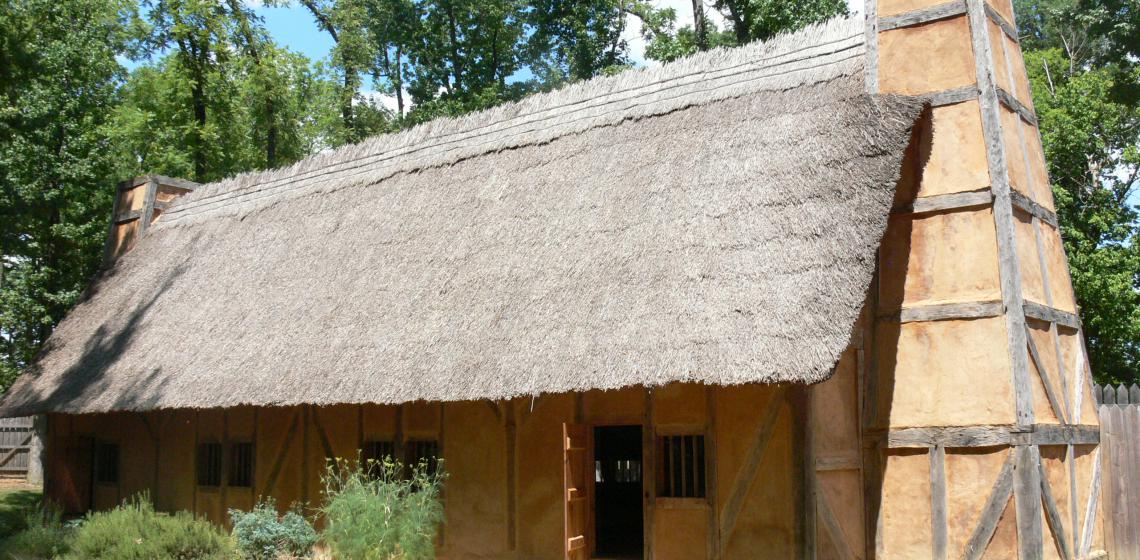
In May 1611, Sir Thomas Dale arrived in Virginia with instructions from the London Company to find a secure and healthy area to establish a new town and principal seat for the colony. He moved up the James River and established Henricus, the colony’s second settlement. By 1622 the location was abandoned. Eventually the exact location of the former town of Henricus was forgotten.
Though archaeological evidence of the actual settlement has not been found (due to the creation of Dutch Gap and other disturbances nearby), a reconstruction based on historical evidence of the settlement has been created nearby as a living history museum, Henricus Historical Park.
Henricus Historical Park re-creates this historical journey that took place four hundred years ago highlighting a significant time where property ownership by the common man was a unique concept. This innovative idea, combined with the development of the first English hospital, the chartering of the first college in the New World, the English home of Pocahontas, the establishment of tobacco as the first cash crop in the New World, established the Citie of Henricus.
The recreated 1611 Citie of Henricus, an outdoor living history museum with 12 recreated colonial structures, demonstrates history through “hands-on” encounters with period dressed historical interpreters. Visitors interact with interpreters during which time visitors may be asked to assist with cooking, blacksmithing, planting or harvesting. This new English settlement would be called “The Commonwealth of Henrico” or “Henricus” in honor of the eldest son of King James I, Prince Henry. The recreated English settlement represents various military, trades, and farming elements of Henricus during the early colonial period from 1611-1622.
Henricus Historical Park also interprets the culture of the Arrohateck people of the Powhatan Indian chiefdom at the time of contact with the English colonists. In the Indian village, the visitor may see the crafting of a canoe, or the cultivation of corn and tobacco on the approach to the fortified Powhatan Indian village where visitors may then enter several Indian dwellings known as “long-houses” or “yehakins”. The village illustrates the daily life of the local Indians and demonstrates how these people thrived at the time of contact with the English.
The reconstructed dwellings comprise of a Native American area, a Soldier's House, the Blacksmith's Forge & Tradesmen's Area, a Tobacco Barn & Planter's House, Mount Malady: The First Hospital, Rocke Hall, River Commerce, a Church and Meeting Hall, the Proctor Plantation, animal pens and an officer's cabin.
Text source: henricus.org
